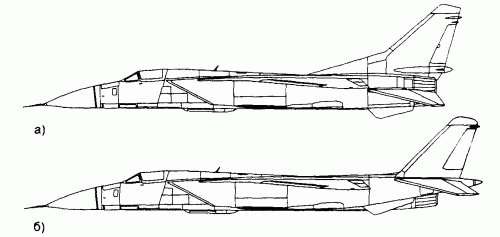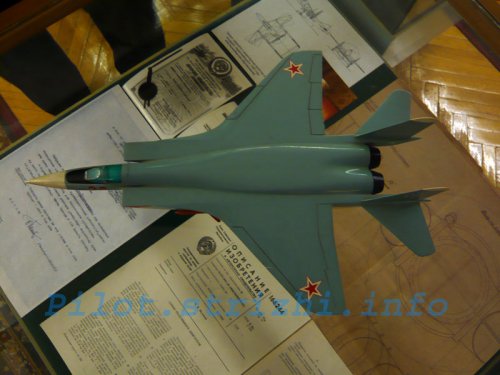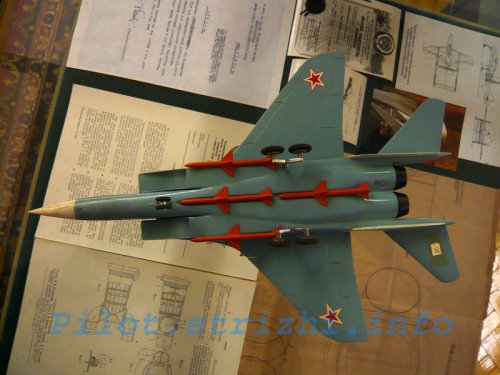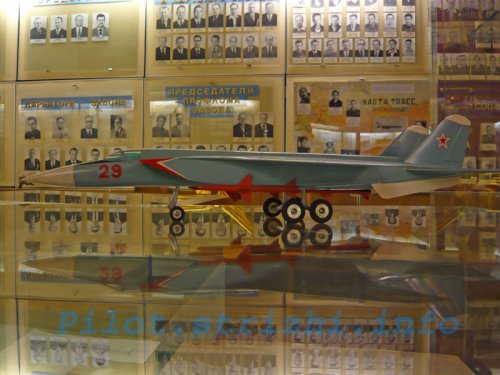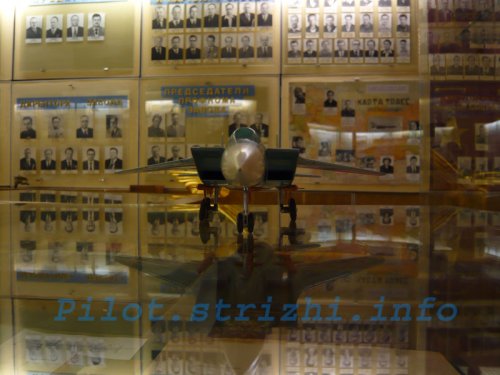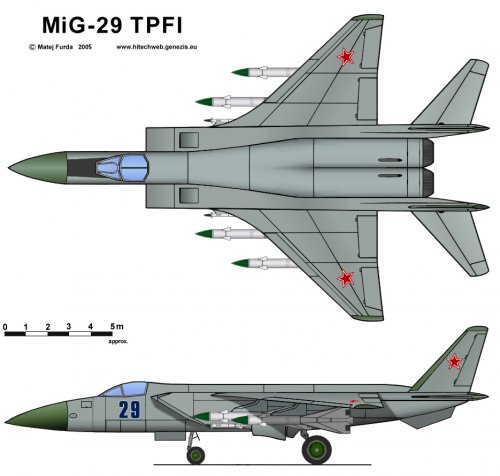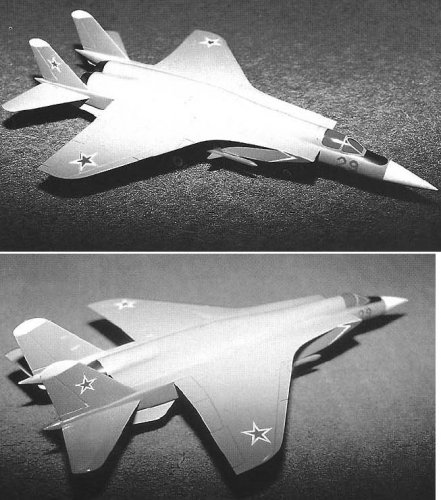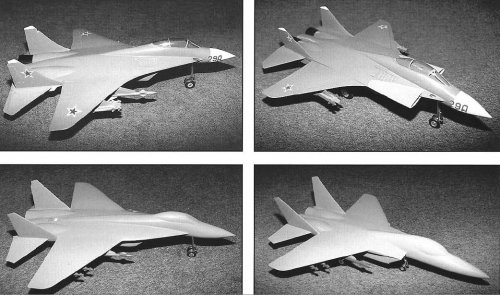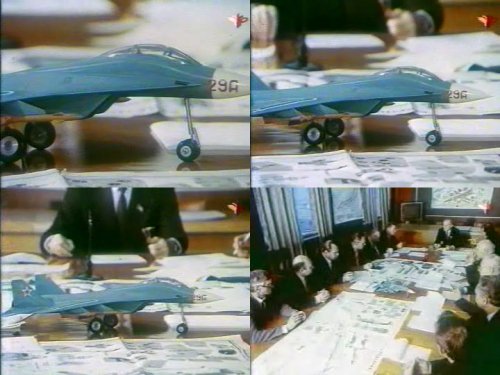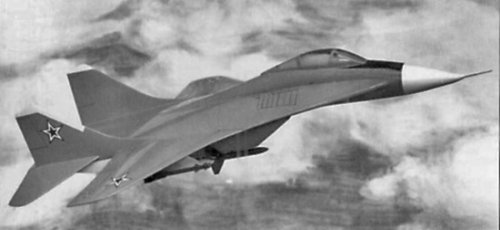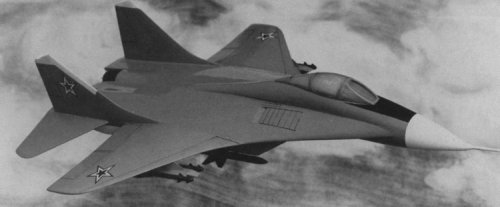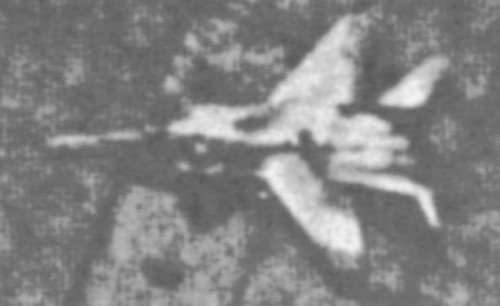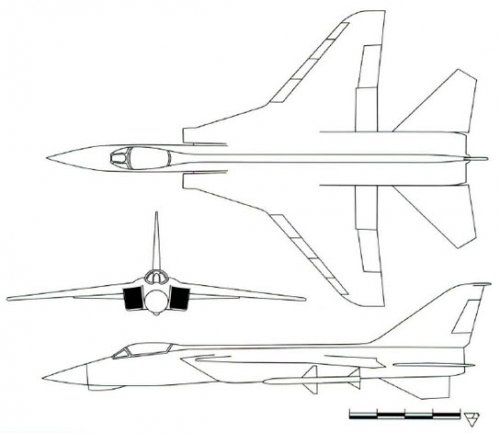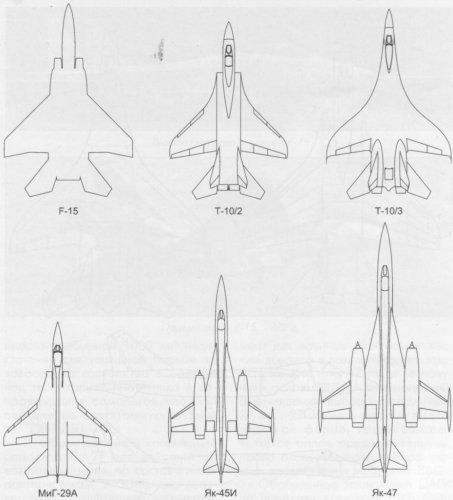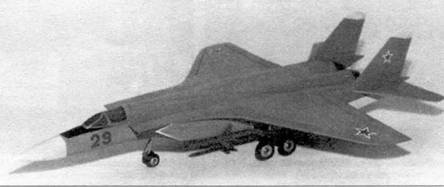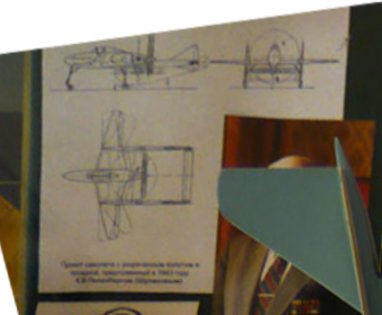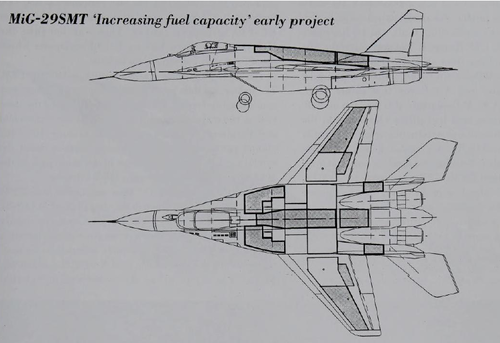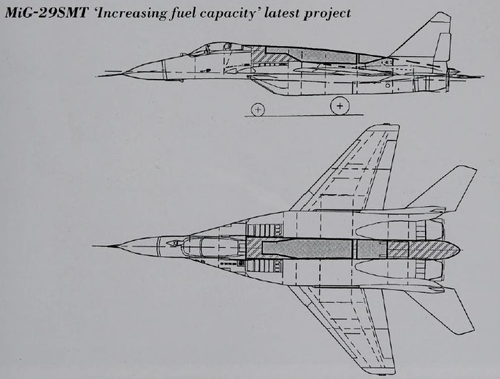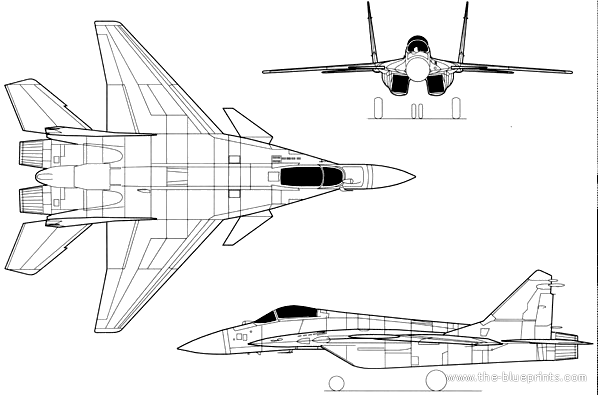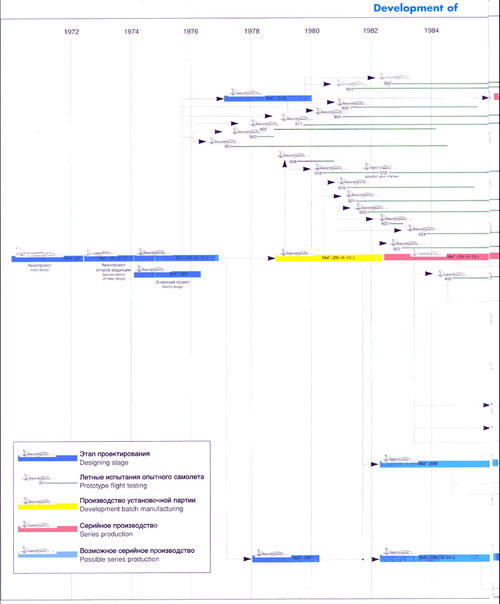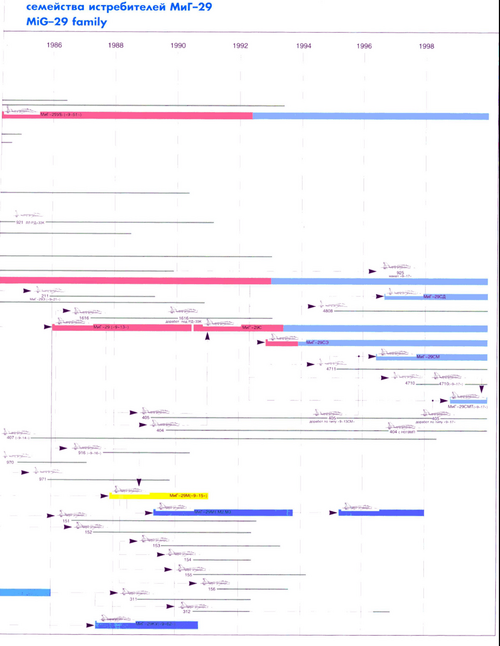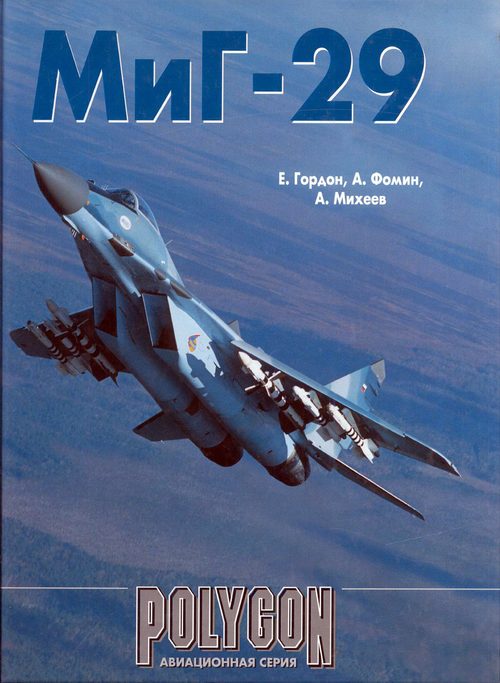This particular blueprint appears to be taken directly from the book by Piotr Butowski "Lotnictwo Wojskowe Rosji vol. 3" from 1997. In principle, this MiG-35 (izd. 9-25) was supposed to be an evolution of the MiG-29M (izd. 9-15), and I would say that the main idea behind it was to expand the range/payload capabilities to be more competitive with Su-27M. The fuselage was supposed to be extended by 920 mm (910 mm according to Y. Gordon), while the wings were based on the MiG-29K (izd. 9-31) one, with a 12.00 m wingspan. In total, an additional 1500 kg of fuel (in comparison to 9-15) was to be carried internally. In terms of the engines, in the first stage, a TVC version of the RD-33s was considered, with further plans including 98.1 kN derivative, which would require some revisions to the air intakes. The avionics was supposed to benefit from a new PESA radar (RP-35 according to Butowski, Zhuk-F according to Y. Gordon). Although there was some initial interest in the project from RuAF, it quickly waned, and the project was put on the shelf. During MAKS-97, MAPO MiG announced plans for further development of the idea, with izd. 9-35. The principle was very similar - extended fuselage, enlarged internal fuel tanks, but this time no canards were planned. Again, nothing materialized out of this project.

